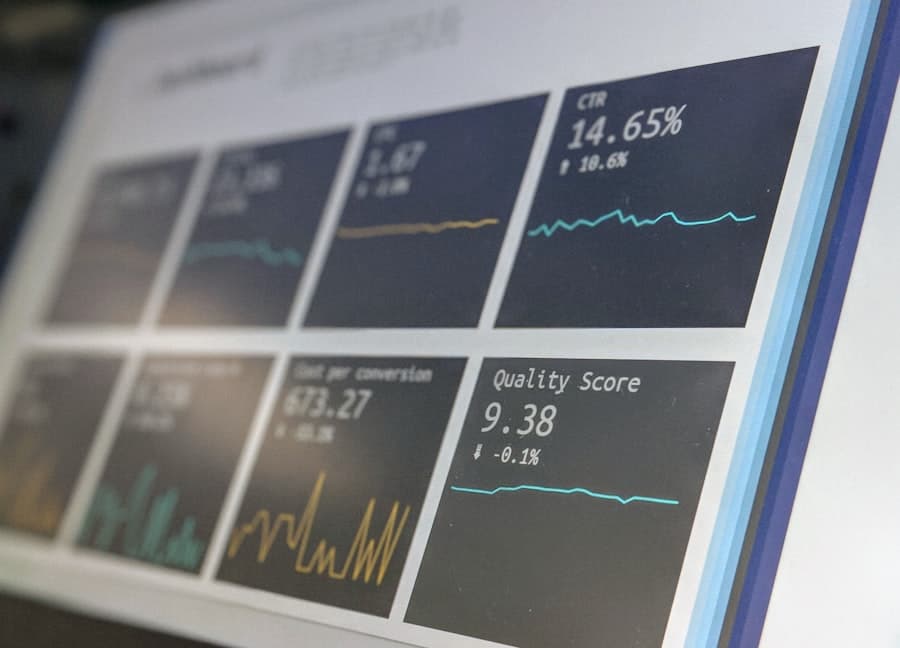In the rapidly evolving landscape of healthcare IT, Practice and Case Management Systems (PCMS) have emerged as essential tools for enhancing operational efficiency and improving patient outcomes. These systems are designed to streamline the management of patient information, treatment plans, and administrative tasks, thereby allowing healthcare providers to focus more on patient care rather than paperwork. By integrating various functions such as scheduling, billing, and clinical documentation into a single platform, PCMS facilitates a more cohesive approach to patient management.
The relevance of PCMS in healthcare cannot be overstated. As the industry faces increasing pressure to improve care quality while reducing costs, these systems provide a solution that addresses both challenges. They enable healthcare organizations to manage complex patient cases effectively, ensuring that all aspects of care are coordinated and documented.
This is particularly important in environments where multidisciplinary teams are involved in patient care, as it fosters collaboration and communication among providers.
Key Takeaways
- Practice and case management systems are tools used by organizations to streamline and optimize their workflow and client management processes.
- Using practice and case management systems can lead to increased efficiency, improved client satisfaction, and better decision-making.
- When looking for a practice and case management system, it’s important to consider features such as customization, integration with other systems, and user-friendly interface.
- Implementing practice and case management systems in your organization requires careful planning, training, and ongoing support to ensure successful adoption.
- Choosing the right practice and case management system for your needs involves evaluating your organization’s specific requirements, budget, and long-term goals.
Benefits of Using Practice and Case Management Systems
The adoption of Practice and Case Management Systems offers numerous benefits that can significantly enhance the operational capabilities of healthcare organizations. One of the primary advantages is improved efficiency. By automating routine tasks such as appointment scheduling, billing, and documentation, PCMS reduces the administrative burden on staff.
This not only saves time but also minimizes the risk of human error, leading to more accurate patient records and billing processes. Another critical benefit is enhanced patient engagement. Many PCMS solutions include features that allow patients to access their health information, schedule appointments, and communicate with their healthcare providers through secure portals.
This level of engagement empowers patients to take an active role in their care, which has been shown to improve adherence to treatment plans and overall health outcomes. Furthermore, by providing timely access to information, these systems can help reduce no-show rates and improve patient satisfaction.
Features to Look for in Practice and Case Management Systems

When selecting a Practice and Case Management System, it is essential to consider specific features that align with the needs of your organization. A robust PCMS should include comprehensive patient management capabilities, such as electronic health record (EHR) integration, customizable treatment plans, and real-time data analytics. These features enable healthcare providers to track patient progress effectively and make informed decisions based on up-to-date information.
Additionally, user-friendly interfaces are crucial for ensuring that staff can navigate the system efficiently. Training time can be significantly reduced when the software is intuitive and easy to use. Other important features include secure communication tools for patient-provider interactions, billing and insurance claim management functionalities, and compliance tracking mechanisms to ensure adherence to regulations such as HIPABy prioritizing these features, organizations can select a PCMS that not only meets their current needs but also supports future growth.
Implementing Practice and Case Management Systems in Your Organization
The implementation of a Practice and Case Management System requires careful planning and execution to ensure a smooth transition from existing processes. The first step is conducting a thorough needs assessment to identify the specific requirements of your organization. This involves engaging stakeholders from various departments, including clinical staff, administrative personnel, and IT specialists, to gather insights on their workflows and pain points.
Once the needs assessment is complete, organizations should develop a detailed implementation plan that outlines timelines, resource allocation, and training requirements. It is crucial to involve end-users in the training process to facilitate buy-in and ensure that staff feel comfortable using the new system. Additionally, organizations should establish a feedback mechanism to address any issues that arise during the implementation phase promptly.
By taking a structured approach to implementation, healthcare organizations can maximize the benefits of their new PCMS while minimizing disruptions to patient care.
Choosing the Right Practice and Case Management System for Your Needs
Selecting the right Practice and Case Management System is a critical decision that can impact the overall efficiency of your organization. To make an informed choice, it is essential to evaluate multiple vendors based on their offerings, reputation, and customer support services. Conducting demonstrations and requesting trial periods can provide valuable insights into how well a system aligns with your organization’s workflows.
Cost is another significant factor to consider when choosing a PCMS. Organizations should assess not only the initial purchase price but also ongoing maintenance costs, subscription fees, and potential costs associated with training staff. Additionally, it is vital to ensure that the chosen system complies with industry regulations such as HIPAA to protect patient data adequately.
By taking a comprehensive approach to vendor evaluation, healthcare organizations can select a PCMS that meets their unique needs while providing long-term value.
Best Practices for Utilizing Practice and Case Management Systems

To maximize the benefits of Practice and Case Management Systems, healthcare organizations should adopt best practices that promote effective utilization of these tools. One key practice is regular training for staff members to ensure they are up-to-date with system features and functionalities. Continuous education helps staff leverage the full potential of the PCMS while minimizing errors associated with outdated knowledge.
Consistency in how information is recorded ensures data integrity and facilitates accurate reporting and analytics. Organizations should also encourage collaboration among departments by utilizing shared features within the PCMS that promote communication and coordination of care.
By fostering a culture of collaboration and continuous improvement, healthcare organizations can enhance their overall performance through effective use of their PCMS.
Common Challenges and Solutions in Using Practice and Case Management Systems
Despite the numerous advantages offered by Practice and Case Management Systems, organizations may encounter challenges during their use. One common issue is resistance to change among staff members who may be accustomed to traditional workflows. To address this challenge, leadership should emphasize the benefits of the new system and involve staff in the decision-making process from the outset.
Providing adequate training and support can also help alleviate concerns about transitioning to a new system.
Regular audits and assessments can help identify vulnerabilities within the system, allowing organizations to take proactive steps to mitigate risks.
By addressing these challenges head-on with strategic solutions, healthcare organizations can optimize their use of PCMS while safeguarding patient data.
The Future of Practice and Case Management Systems
As technology continues to advance at a rapid pace, the future of Practice and Case Management Systems looks promising. Emerging technologies such as artificial intelligence (AI) and machine learning are poised to revolutionize how these systems operate by providing predictive analytics that can enhance decision-making processes. For instance, AI algorithms can analyze vast amounts of patient data to identify trends or potential health risks before they escalate.
Additionally, the integration of telehealth capabilities within PCMS is becoming increasingly important as remote care continues to gain traction in the healthcare landscape. This integration allows for seamless communication between patients and providers while maintaining comprehensive records within the same system. As healthcare organizations adapt to these trends, they will be better equipped to meet the evolving needs of patients while improving operational efficiency.
In conclusion, Practice and Case Management Systems are invaluable tools for healthcare organizations seeking to enhance their operational efficiency and improve patient care outcomes. By understanding their benefits, features, implementation strategies, and best practices for utilization, healthcare professionals can make informed decisions that align with their organizational goals. As technology continues to evolve, staying abreast of emerging trends will be crucial for maximizing the potential of these systems in delivering high-quality care.
Key takeaways include prioritizing user-friendly features during selection, investing in ongoing training for staff, and adopting a proactive approach to data security compliance—all essential components for successful implementation and utilization of PCMS in today’s dynamic healthcare environment.
If you are interested in learning more about how technology is shaping our world, you should check out the article


